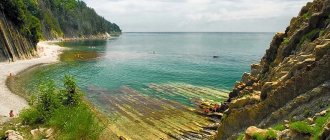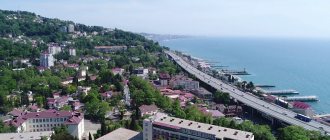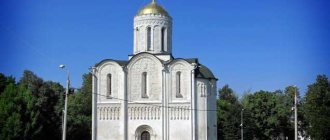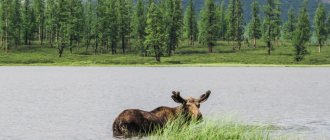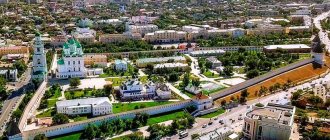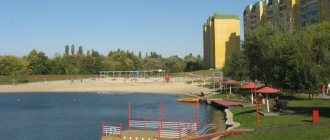description
Vitebsk district is located in the northeastern part of the region of the same name. It borders with the Gorodok, Sennen, Shumilinsky, Beshenkovichi and Liozny districts of Belarus and with the Pskov and Smolensk regions of the Russian Federation. There are 367 settlements in the region, the administrative center is in Vitebsk. The rivers Western Dvina and its tributaries flow here - Luchosa, Vitba, Kasplya, Usvyacha, Luzhesnyanka, Shevinka. In the vicinity of Vitebsk there are 68 lakes, the most picturesque of which are Zaronovo, Sosna, Shevino, Borovskoye. About half of the region's territory, which covers an area of about 2,800 sq. km, is covered with forest.
Braslav Lakes National Park
The ancient glacier left more than 10 types of relief in the Braslav Lake District , which became one of the main features of the region. Large and small lakes with bizarre shores, winding rivers , numerous islands (on some in ancient times there were fortresses and a monastery), glacial hills (eskes and kamas) - all this created the conditions for rich flora and fauna. the Braslav Lakes National Park, founded in 1995, with an area of about 70 thousand hectares, more than 1,900 plant species grow and 312 species of vertebrate animals live. Here you can see a huge number of birds, including rare birds: great bittern, black stork, white crane...
On the territory of the Braslav Lakes, fascinating eco-trails have been laid out for tourists and a safari park is being created, tours are held for hunters and fishermen, and a pleasure boat runs along Drivyaty in the summer season. Find out more about the park here .
The administrative center of the national park is located in the city of Braslav
Five reasons to visit the Vitebsk region
1. Get lost in time in the floodplain of the Shevinka River
Many peoples have interpretations of stories about people being lost in time. A resident of the village of Dutch colonists on the Hudson River, Rip van Winkle, for example, ran away from his grumpy wife to hunt in the mountains and, tired, fell asleep. When he came home the next day, it turned out that he had been gone for 20 years. The Belarusian prototype of the hero of Irving’s novel could quite possibly get lost near the floodplain of the Shevinka River in the Vitebsk region. Residents of the surrounding villages tell stories about how people, having gone for berries and mushrooms, returned a few days later, although they were convinced that their absence lasted only a few hours. Perhaps the key to the solution is in the picturesqueness of these places - the river winds like a narrow ribbon, and spreading oak trees bend their branches above it. On the banks of Shevinka there are stone ruins of water mills, one of which may have been used by the tallest man in the world. And this is the second reason for a trip to the Vitebsk outskirts.
2. Visit the homeland of the tallest man in the world
For breakfast, he ate 8 loaves of white bread with butter, 20 eggs and drank 2 liters of tea. Fyodor Makhnov was born in the village of Kostyuki, Vitebsk region, in 1878. At the age of 12, the boy’s height reached two meters. At 14, the tall young man joined Otto Bilinder's circus, where he entertained the audience by raising a platform with a small orchestra. Leading a circus life, Fyodor Makhnov grew to 285 cm. Interesting facts from the life of the strongman are kept in the school museum in Stary Selo - not far from the place where he is buried. In honor of the 140th anniversary of the giant, a monument was erected on the pedestrian Suvorov Street in Vitebsk this year - of course, life-size. And the regional museum of history and local lore in the village of Oktyabrskaya dedicated a separate exhibition to Fyodor Makhnov and held a scientific conference “Volats of the Dvinia region.” Among the exhibits are giant-sized clothing and shoes, photographs, documents, and circus posters.
3. Go on a “crusade” and see stone crosses
The spectacle - whether in a forest, field, or in a rural cemetery - is always fascinating. Traveling around the Vitebsk region, stone crosses sticking out of the ground can be seen in several places. They were preserved in the Old Believer cemetery in the village of Luzhesno, where Luzhesnyanka flows into the Western Dvina, and formerly there was the village of Slobodka. There are crosses in the villages of Savchenki and Sushchevo, in the cemetery near the village of Sudniki and in the village of Verkhovye. The “crusade” would not be complete without stones on the western outskirts of the village of Zaronovo and at the Kakhovka cemetery near the village of Sokolniki. And finally, in the forest - near the village of Korolevo.
4. Come for cranberries to one of the cranberry reserves
There are three of them in the area - “Moshno”, “Chistik”, “Zapolsky”. And all three have the status of republican significance. The cranberry harvest in the country begins in September - a good reason to travel and harvest berries that are useful in all respects. You can start with “Moshno” - the reserve is located 20 kilometers southwest of Vitebsk on a raised bog with an area of about 440 hectares. The landmark is the village of Voevodki of the Skrydlevsky forestry and the picturesque Lake Moshno, with four small islands, connected by a stream to Lake Dolgiy.
5. Find yourself at the bottom of the ancient Devonian sea and see Cynclidotus Danube
In search of the bottom of the prehistoric sea, you should go to the vicinity of Ruba - here, along the banks of the Western Dvina, Devonian layers of dolomite lie, making this place the largest of the ten known deposits of high-quality limestone in the country, formed several tens of millions of years ago. The lime plant was founded near Ruba back in 1931. Now it has been transformed into OJSC Dolomite. The mineral is mined in several areas. Going down to the bottom of the quarry, you can find pieces of rock with imprints of ancient creatures that once settled to the bottom of the sea.
Along the course of the Western Dvina, Cynclidotus Danube lives on the dolomite rapids. This is not a smack or a river monster. This is a rare aquatic moss that can grow at depths of up to two meters. And the outskirts of Ruba are the only place where it grows known in Belarus. It is especially clearly visible from the bridge over the Dvina near the “dolomite” village.
Braslav
The city of Braslav , known in written sources since 1065 , is located in the very heart of the lake region of Belarus : only within a radius of 30 km there are three dozen lakes, and the city itself is surrounded on all sides by mirror-like surfaces of water. The largest of the surrounding “pearls” is Lake Drivyaty , the fifth largest in Belarus. You can see this natural beauty from the very center of Braslav, where the ancient settlement of Castle Hill . The city, whose coat of arms depicts the Christian symbol - the eye of God's care, is also famous for its spiritual shrines. Among them is the beautiful Church of the Nativity of the Blessed Virgin Mary (late 19th century), where the miraculous Braslav Icon of the Mother of God - the Queen of the Lakes, intercessor and patroness of the region.
240 km from Vitebsk
A new landmark of the city, noticeable from afar, was the large letters of the name “BRASLA” and the image of the coat of arms on the slope near the shore of Lake Drivyaty. The inscription, illuminated at night, stretches for 15 meters.
Braslav is also interesting for its events: every year the festival of medieval culture “Sword of Bryachislav” , the international festival of traditional culture “Braslav Lightnings” , the music and sports festival and sailing regatta VIVA BRASLAV , the music festival “Living Sky of Braslav” are held here .
Story
The territory occupied by the Vitebsk region today was part of the Vitebsk Principality at the beginning of the 12th century. Olgerd, whose monument adorns the historical center of Vitebsk, made it the political center of the northeastern Podvina region. From 1392 to 1506, the Vitebsk land appeared on the maps of the Grand Duchy of Lithuania, which was subordinate to the Grand Duke of Lithuania. 90 years later, the Vitebsk Voivodeship, which included the Vitebsk Viceroyalty, was governed by a voivode, a castellan and a bishop. Soon, as a result of the new princely administrative reform, the Vitebsk povet appeared. In the second half of the 18th century, these lands became part of the Russian Empire, received the status of a province and were divided into counties. Vitebsk, with its center in Vitebsk, alternately belonged to the Mogilev, Pskov, Polotsk, and Belarusian provinces. In 1924 it became part of the Vitebsk District in the BSSR and until 1930 it appeared under the name of the Southern Vitebsk District. Seven years later it was transformed into Vitebsk. During the Great Patriotic War, Vitebsk and the surrounding area suffered greatly, as evidenced by the many memorials and mass graves. The territory of the district was gradually restored and modified - until modern borders were established in 1960.
Now the Vitebsk region is home to about 40 thousand people employed in industry, agriculture and agrotourism. Significant for the region are OJSC Dolomit, SPK Olgovskoye and Rudakovo, Vitebsk broiler poultry farm Ganna. By the way, the factory owns a restaurant popular among Vitebsk residents and guests of the region in the village of Dolzha on the shore of Lake Sosna.
Saint Sophia Cathedral
The Cathedral of Sophia of the Wisdom of God , one of the earliest Orthodox churches in Europe and the first stone one in Belarus, is included in the tentative UNESCO World Heritage List . Erected in 1044 - 1066 by order of Prince Vseslav the Magician , it personified the independent and powerful Principality of Polotsk . The cathedral followed its "elder sisters" in Kiev and Novgorod, built on the model of the cathedral in Constantinople , and became Hagia Sophia in the world In the middle of the 18th century it was significantly rebuilt in the original Vilna Baroque .
Nowadays, here you can see ancient frescoes and a copy of the famous work of Leonardo da Vinci “The Last Supper” , listen to masterpieces of Belarusian and foreign organ music , and visit the museum of the history of the cathedral’s architecture.
Polotsk, st. Zamkovaya, 1
What to see
The Vitebsk region is not rich in iconic architectural monuments, but it has a variety of natural monuments. In addition to the cranberry reserves, in the vicinity of Vitebsk there is the ornithological reserve "Dymovshchina", where you can see the kestrel, merlin, great bittern and dozens of other rare species of birds, geological reserves "Black Coast", "Borisova Gora", "Disninnikovo", "Rogatka" , “Shapurovo”, “Sloboda on Kaspl”, “Sloboda Dvinskaya”, “Dricheluki” - the names alone are enough to spark the curiosity of an avid traveler. As well as six botanical reserves of local importance - “Vitebsky”, “Tulovsky”, “Oktyabrsky”, “Pridvinye”, “Rubovsky” and “Devil’s Beard”. The latter has a very intriguing name and is located just two kilometers from Vitebsk, on the right bank of the Dvina. Oaks, pines, ash, lindens and many plants listed in the Red Book grow here. The reserve received its name because of the cape, steep and high, which was once chosen for fishing by robbers who attacked merchant ships sailing along the Dvina.
Free-standing trees also deserve attention. So, in the Vitebsk region - near the village of Sushchevo - the largest pine tree in the country grows. Its diameter is 140 cm, height is 28 meters, and the age of the tree is supposed to reach 200-250 years. The oak trees near the village of Sokolniki are striking in appearance and two hundred years old.
The lakes are considered the undoubted wealth of the region - 12 large and many small. In total - more than sixty. On hearing - Vymno, Lettsy, Sosna, Gorodno, Moshno, Polonskoye, Shevino, Dolgoe, Zaronovo. Many lakes are used for recreation - they have public beaches and infrastructure. Sanatoriums and agricultural estates are open on the shores of the lakes.
The most visited place by tourists in the area is Zdravnevo. On the right bank of the Dvina near the village of Koitovo there is the estate of Ilya Repin, which the artist bought in 1892 with the proceeds from the sale of paintings. Repin spent eight productive years at the estate. Several dozen famous works belong to this period of his work - among them “Belarus”, “On the Western Dvina. Sunrise", "Moonlit Night". Since 1988, a museum has been opened in the estate. Animation programs dedicated to important events, seasonal holidays, and the arrival of guests are held here.
The arboretum of the Luzhesnyansky Agricultural College, founded in 1974, was conceived as a place of recreation and benefit. Technical school teacher Nikolai Razhkov took charge of the park, collaborating with large botanical gardens of the Soviet Union. The arboretum is located on the right bank of the Dvina and has an area of 8.8 hectares. The park is divided into areas where hundreds of plant species grow, including lianas, by alleys - maple, linden, deciduous, birch and ash. In addition to the trees typical of the area, the imported Canadian spruce and Manchurian walnut, and the Amur velvet cork tree, listed in the Red Book, have taken root here. The park is especially picturesque in the spring during the flowering period and in the fall during the Indian summer.
There are little-known sights in the Vitebsk region, the search for which is easier to do accompanied by a local historian, who will not only show you, but also tell you about them in a fascinating way. One of the noteworthy objects is the postal station near the village of Borovlyany. A few kilometers away, near the Vitebsk-Gorodok highway, a postal station building has been preserved - a monument to the road architecture of Belarus from the mid-19th century. The building with rooms for visitors and the caretaker, with outbuildings in a courtyard lined with cobblestones, where Pushkin and Napoleon could probably stay, is called the Haunted House by local residents. Perhaps it's worth finding out why?
There is also a lover’s stone in the Vitebsk region - near the Khrapovlyanka river, between lakes Sredneye and Maloye. It is the largest near Vitebsk - 250 cm wide, 160 cm long, 320 cm high. And it has a sad, romantic history. They say that lovers met near this stone - a young beauty and the farrier Sosnovsky. It was here that the young people met death at the hands of a jealous rich man. By the way, the stone still serves as a place for meetings and dates, and finding it in the vicinity of Dolzhi will not be difficult.
Polotsk
The chronicled history of one of the oldest cities in Eastern Europe begins with its first mention in 862 in the Tale of Bygone Years. Polotsk was a large craft and trade center, through which one of the main routes of the great route “from the Varangians to the Greeks” passed. This is the “cradle” of the Belarusian state and culture, the capital of the first principality, the birthplace of the outstanding Slavic educators Euphrosyne of Polotsk , Francis Skaryna , Simeon of Polotsk . The most ancient city of Belarus carefully preserves its cultural heritage - majestic churches and Orthodox shrines , including the restored Cross of Euphrosyne of Polotsk .
According to scientists, the geographic center of Europe . A memorial sign has been installed here , and each guest can receive a certificate of their stay in this special place.
Vitebsk region
Celebrities
A native of the village of Vymno, Vitebsk region, was the Belarusian ethnographer, folklorist and local historian Nikolai Nikiforovsky. He collected ethnographic material, being more interested in the spiritual and material culture of the inhabitants of the Vitebsk province. In memory of his teaching activity, a memorial plaque was installed on one of the historical buildings on Tolstoy Street in Vitebsk. The village of Zazyby, Vitebsk region, became the small homeland of Mikhas Lynkov, the author of “Mikolka the Steam Locomotive” and the epic novel “Days of Ages.” In the village of Punishche, now in the Vitebsk region, the organizer of the partisan movement and hero of the Soviet Union, Minai Filippovich Shmyrev, was born. A memorial obelisk has been erected in his homeland, and a memorial museum is open to the public in Vitebsk. In Surazh, Vitebsk region, there is a monument to the children of Shmyrev, who were shot by the Nazis.
Many people know the name of Alexei Sapunov - a Belarusian historian, local historian, researcher of the Vitebsk region. He spent a lot of time at the Kakhovka estate on the banks of the Luzhesnyanka River. Alas, the estate no longer exists. Not far from the village of Sokolniki, only a memorial sign has been preserved. The surrounding area, however, has not lost its picturesqueness, and a walk through Sapunovo’s places can turn into an exciting adventure. But the “Miloye” estate in the village of Mazolovo, built at the turn of the 18th and 19th centuries by Ignat Mankovsky and named by the owner for the beauty of the local nature, has been preserved. Mankovsky served as governor, and then as vice-governor of the Vitebsk province, was known as an innovator in the field of economic management, and was versed in natural sciences and architecture. Wrote, and was named as the alleged author of "The Aeneid to Beverage."
Trinity Church in the village of Vidzy
The Church of the Nativity of the Virgin Mary (Trinity) in the urban village of Vidzy is the second largest Catholic church in Belarus, second only to the shrine in Budslav . It is also one of the highest: the spiers of the temple reach 59 meters, which is slightly less than the famous “record holder” church in Gervyaty (61 m). The first Catholic parish was founded in Vidzy back in 1481 by Bernardine monks. was seriously damaged during the First World War In memory of those tragic events, artillery shells were built into its walls.
In 2014, the church in Vidzy celebrated its centennial anniversary , and still retains its grace: soaring towers and pointed arches, windows with openwork frames and colored stained glass...
Braslav district, town Vidzy, 40 km from Braslav and 260 km from Vitebsk
Where to visit?
In the year of the 140th anniversary of the birth of Fyodor Makhnov, a new holiday appeared on the Vitebsk festival poster - the Volaty Prydzvinnya festival in Maly Lettsy. It is expected that the event dedicated to the tallest man will become an annual event, and his figure will become a recognizable brand of the region.
The Repin Museum-Estate in Zdravnevo has been the venue for the scientific and practical conference “Vitebsk Antiquities” for several years. Musical evenings and ethnographic festivals are also held here.
Postavy
The history of the heyday of Postavy (1409) is associated with the famous Tyzengauz dynasty , who owned the town since the 18th century. An influential figure of the Grand Duchy of Lithuania, industrialist and philanthropist Antony Tizengauz Giuseppe de Sacco to Postavy to organize a new stone building, which has partially survived to this day. At the Tizengauz factories in Postavy they made paper with watermarks for state needs, sails for the Grand Duchy of Lithuania fleet, and gold-embroidered belts that were not inferior in quality to those from Slutsk . Later, another representative of the genus, the enthusiastic ornithologist Konstantin Tizengauz , turned Postavy into a center of science. At various times, the Tizengauze Palace housed a ballet school, a rich ornithological museum - the base of the Faculty of Biology of Vilnius University, and an art gallery.
Today, the Tizengauze Palace (in 1760) houses a hospital, and in the basements there is a historical exhibition dedicated to the glorious dynasty and the history of the First World War . Other attractions in Postavy include the Church of St. Anthony of Padua , St. Nicholas Church (1894), and a monument to Konstantin Tyzenhaus .
What should I bring?
One of Nikolai Nikiforovsky’s books can serve as a memory of trips around the Vitebsk region. For example, “Unclean Ones” is a collection of common folk tales in Vitebsk Belarus about evil spirits, or “Common folk signs and beliefs” collected in the Vitebsk region. Superstitious rituals and customs, legendary stories about persons and places.” An exotic souvenir would be a piece of dolomite from the bottom of a prehistoric sea or a photograph of your own foot next to the boot of Fyodor Makhnov, in whose galoshes they say children slid down the mountain like on a sled. The taste of the delicacy brought from the Ganny brand store and fresh Rudakovsky cucumbers can also evoke nostalgia and become a reason for another trip to the outskirts of Vitebsk.
Church of St. John the Baptist in the village of Kamai
In the village of Kamai, Postavy district, stands an unusual church - one of three Belarusian fortified temples included in the preliminary UNESCO World Heritage List . At the same time, it differs significantly from two other shrines - Orthodox churches in Synkovichi and Murovanka . The Kamai Church, built as a fortress, was indeed a place of defense during the war with the Swedes, as evidenced by traces of cannonballs in the walls. In addition, the temple, built in 1603-1606, is one of the few in Belarus that has never been closed . Its central altar contains a miraculous icon of the Mother of God with a child (17th century).
Postavy district
Church of St. Anne in the village of Mosar
Prosperity for Mosar, known since 1514, was brought by the noble family of Brzhestowski. By order of the married couple Robert and Anna Brzhestowski, palace and the Church of St. Anne were built on the estate , which, unlike the count’s residence, has survived to this day. by Father Jozas Bulka, who came to serve in 1989 . He turned the swampy surroundings into a beautiful arboretum with religious sculptures, fountains, and flower beds. Among the attractions of the “Belarusian Versailles”, as Mosar is called, is a copy of the famous
from St. Peter's Basilica in the Vatican, the tallest Catholic cross in Belarus (23 m), a 5-meter statue of Christ ...
In the former belfry, Father Bulka founded the first and only anti-alcohol museum . And in the ancient barn of Mosar there is an ethnographic exhibition .
Glubokoe district, Mosar village
Glubokoe
The city of Glubokoe , with more than 600 years of history, is called the “cherry capital” of Belarus. The first gardens appeared here thanks to the breeder Boleslav Lapyr, who brought seedlings from different countries and developed new winter-hardy varieties. Recently, residents revived the cherry orchard , planting 1,414 trees in honor of the city’s birthdate, and founded a distinctive cherry festival . the Trinity Church and the Cathedral of the Nativity of the Blessed Virgin Mary (a former Carmelite church built in 1639-1654), standing opposite the holy Mount Athos . Interestingly, there are five lakes on the territory of Glubokoye.
The list of popular attractions of the city includes a bronze sculpture of a cherry tree , a monument to Baron Munchausen , a square of famous natives of Glubotchina , including the artist Yazep Drozdovich , the founder of the Belarusian theater Ignat Buinitsky , aircraft designer Pavel Sukhoi , writer Vaclav Lastovsky , the father of modern Hebrew Eliezer Ben-Yehuda .
160 km north of Minsk
Which bus will you take?
All excursion transport can be combined into three groups. These are city buses, commuter buses and tourist class buses. As has probably already become clear, buses from the third group, i.e., tourist class buses, are intended for long journeys. What does it mean? This means that they meet European requirements. Our company uses only modern transport for all trips. You won't be resting your feet on adjacent seats: they have large distances between seats. The seats themselves are soft, with comfortably curved backs that recline to a reclining position. Each place is equipped with audio and video equipment, so you won’t be bored while driving along the trails.
As soon as you book a tour, you are assigned a passenger seat number on the bus. It will not change until the end of the trip.
Berezinsky Biosphere Reserve
The oldest protected area in Belarus is the Berezinsky Biosphere Reserve , founded in 1925. Unique ecosystems attract thousands of tourists here. In 1979, the reserve entered the UNESCO World Network of Biosphere Reserves , since 2005 - included in the International Ecological Network, in 2010 - in the Ramsar List of Wetlands... The protected area occupies over 80 thousand hectares and includes various types of forests and swamps , floodplain meadows, lakes and rivers. More than 2 thousand species of plants grow here (78 from the Red Book of Belarus ), dozens of species of mammals and hundreds of birds live. The Berezinsky Nature Reserve is the only place in Belarus and Europe as a whole where you can see all representatives of the “European five” - bison, bear, lynx, wolf and elk.
A unique project for Belarus is being implemented in the reserve: floating log houses with reed roofs, mounted on pontoons, will appear on Lake Plavno. The interior decor will be made of eco-friendly materials, and the motor drive will allow tourists to easily move along the water surface.
The administrative center of the Berezinsky Biosphere Reserve is the village of Domzheritsy, Lepelsky district



